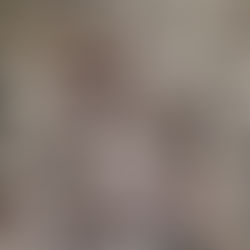The Conceptual Playground
- Andy Ash

- Mar 3, 2024
- 3 min read

What happens at the intersection of conceptual art and teaching?
Freelands Foundation 1st Feb. 2024, Artist Teacher Network
Welcome to the first Artist Teacher Conceptual Playground event!
I wanted to use this session to share more about my artistic practice, walking pedagogy, and to use the empty FF gallery as a space to play - to inquire, to research, to make. The intension was to allow for the participants to address conceptual thinking and making explicitly and progress towards a more conceptual and diverse curriculum – I've been using the term recently as a ‘moving curriculum’. This is where we started the last session, when we engaged with more expansive notions of drawing in the last workshop, and during the conversations and reflections a number of participant, including Martin Derbyshire, raised questions about transforming the orthodoxy of practice seen in schools.
I encouraged participants to read the short essay in advance of the session ‘Caution: You are Entering a Conceptual Playground’ by Melissa Bremmer and Emiel Heijnen, pg 21-29 in What Happens at the Intersection of Conceptual Art and Teaching? (Eds: Jorge Lucero and Catalina Hernández-Cabal): download here.
Some of you know through my teaching and making work, I’m not a fan of the outdated modernist notions or principles that domain schools – like self-expression and formal aesthetics – which often exclude socially engaged art practice, contemporary and conceptual practice. Teachers often cling to these narrow definitions for all sorts of reasons, and I've been working to transform these believes schools are wedded too. This event was an opportunity to take a gentle stroll through the playground of messy conceptual art and teaching.
I firstly led a brief discussion on the reading, using the four concepts offered by Bremner and Heijen;
Art does not have to be BEAUTIFUL - to resist the urge to rely on the visual/eyes, to chose everyday objects, to embrace ugliness and think about concepts over aesthetics;
Art does not have to be SELF-MADE - to resist the romantic notions and image of art as a studio-based artist endeavour, the sole model of artistic practice, to think of art as social process;
Art does not have to be a PRODUCT - no form is intrinsically superior to another and we are free house any form;
Art is not LIMITED to a MEDIUM or DISCIPLINE - go beyond the discipline.
I then facilitated a series of exercises in the gallery space, an opportunity to give space to experience, to think and reflect, to relate the mind and body on the activities.

Walking pedagogy, walking as artistic practice – is something I presently do, on the South Downs, the sea front and city of Brighton – it disrupts conventional notions of categorising - questions, challenges, and re-images perceived norms. These participatory interventions invited the Artist Teachers to actively play with space and ideas, utilising everyday actions such as speaking and walking. By reworking the form and function of these spaces participatory interventions facilitate dialogue around things like value systems, relationships, public space, prescribed practices of being which may inspire expand ways of considering and relating to materials environments and people. Both art, my art and mobiles sites of pedagogy ‘unintentional in normative environments encourage discovery and transformative experience’
The next Artist Teacher session at the FF will be Thurs 28th March, all are welcome, tickets via the FF website.










































Comments